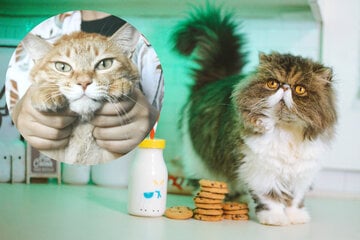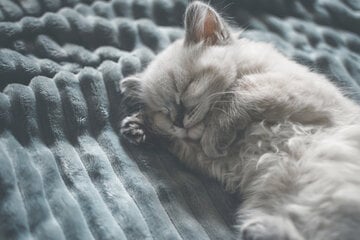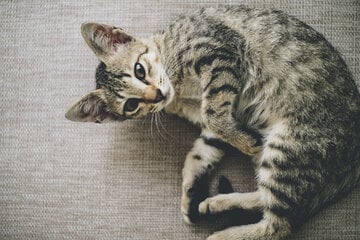Cat losing hair: How to stop my cat from shedding
If you own a fluffy cat, you have probably noticed clumps of fur rolling across your carpet like tumbleweed. How do you stop cats from shedding and losing fur? The answer is less complicated than you might think!
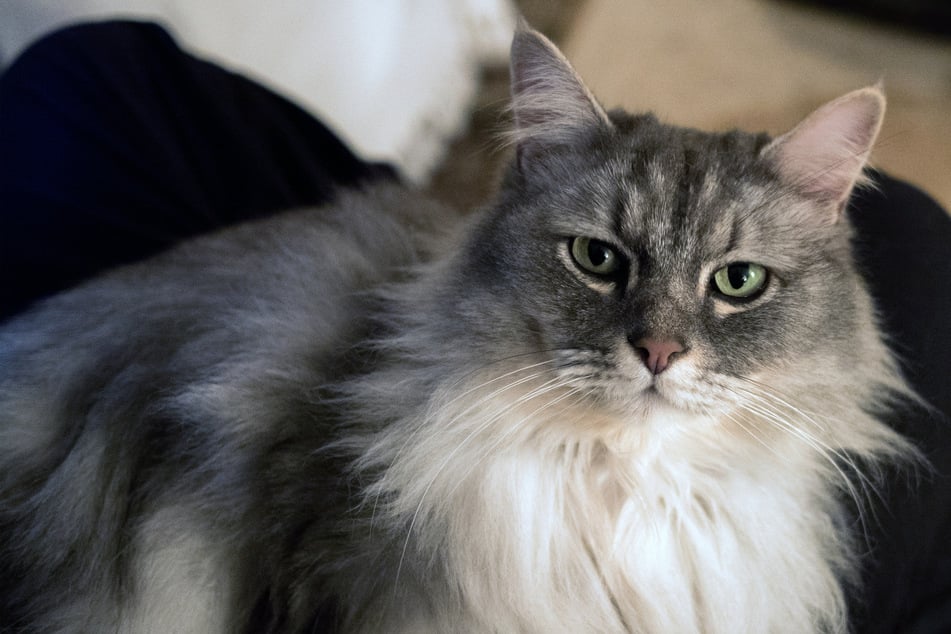
No matter how much you love your feline friend, balls of fur are never fun to deal with. They cause allergies, stick to everything, and are just generally a pain.
But have no fear, there are a variety of things you can do to help!
TAG24's trusty cat guide will take you through how to deal with a cat that's losing fur. Can you stop a cat from shedding, and if not, how do you reduce that layer of fur that has been covering almost every inch of your home?
Forget the fluff and never deal with fur-covered pants again with these simple steps!
How to get my cat to stop shedding
Mitigation is the only way forward when it comes to our furry friends, as there is no way to permanently stop your cat from shedding fur. Think about it this way: is there anyway to permanently stop you from ever losing hair from your head? Unfortunately, the answer is no. What you can do is take steps to reduce shedding and leave less of a mess behind you.
Here's our 9-step guide to dealing with shedding cats
1. Use a cat brush
Cat brushes are the most straight forward and easiest way to reduce shedding, yet many people are far too afraid to start using one. It's true, you made need gloves the first few times that you use one, but after a while your kitty will get used to it and may even grow to enjoy the process.
Using a brush will help to remove loose hair, reducing the size of the coat and control where the fur gets dropped. It is important for reducing fur balls and it results in less of a messy home. Remember to use metal brushes in long fur, soft brushes to give your cat's coat a shine, and a comb to get rid of tangles.
2. Try out some fur care gloves
You can get fur care gloves from most pet stores and they really do work a treat. You'll finally be able to pet your cat like normal, and the loose fur will cling to your gloves. It makes brushing an easier and more pleasant experience, but it isn't nearly as effective.
If you buy some fur care gloves, try to use them more regularly for the best effect. Also keep in mind that they can be used on furniture and clothes to remove fur that has stuck on.
3. Lint rollers work
We've all had that friend who scoffs at the idea of using a lint roller to remove cat fur, and we've all rolled our eyes when they suggest that it doesn't work. Lint rollers are literally designed to remove small particles that have clung to things like upholstery and clothing – cat fur is one such particle.
Simply roll the device over the hairiest areas of your cat, taking care not to hurt the fluffy fellow. Again, this isn't as effective as brushing, but it'll do the job if you make it a regular thing. What this is truly perfect for, of course, is for removing cat fur from your clothes and furniture.
4. Try an animal hair remover
Using static electricity, commercial animal hair removers are an absolute wonder because they will collect all the hair you want to be gathered in a small container. Of course, you need to empty the container, but other than that, this is a more-or-less mess-free option. It's also very easy!
5. Get out the vacuum cleaner
Most people have a vacuum cleaner, making it an unbelievably convenient option. Then again, it's probably not the best idea to use a normal vacuum on your cat. As a result, head on down to your local pet shop and buy a cat hair vacuum. They are quite powerful and will snort up all of your cat's loose hair, or anything rolling around the apartment, in seconds.
6. Laundry is a factor
Doing regular laundry and using spin cycles to bash off any hair that may have jumped onto your clothing is an absolute must as a cat owner. Of course, you can't launder your cat, so this only applies to clothes that are machine washable. What's cool is that putting it in for a spin will often collect up the fur in a couple of easily-manageable balls.
7. Dietary supplements can help reduce hair loss
As with most things, diet also affects your cat's fur quality and health. Make sure that you are giving your cat the highest-quality food possible, and that you aren't giving it snacks all the time. There are particular dry foods that your vet may recommend that are enriched with omega-3 and omega-6 which to strengthen your cat's hair structure, preventing further fur loss.
8. Calm a stressed cat to stop it losing fur
Stressed cats are likely to lose more fur than chilled-out felines. You need to be aware of why your cat is stressed, of course, to be able to keep it calm, but there are plenty of resources on cat anxiety that can help you with that. Keep the factor of separation anxiety in mind, it's not just something that happens with doggos.
The long and short of it, though, is that cats need to feel safe and secure. If you have moved house, if there are a lot of loud noises or strange people around, your cat is going to get anxious and stressed. As a result of this, they will likely start losing fur at an increased rate.
9. Cat grass is a magical and under-utilized thing
There is something truly magical about cat grass. It calms their stomachs, their minds, and their shedding habits. What's more, cat grass is also a pretty and natural thing that you can have lying around the place. The best way to deal with it is just to set a few plants here and there and then just let them be. Your cat will smooch them, chew on them, and generally have a great time!
How to brush your cat
Brushing your cat might seem relatively straight forward, but it's not as simple as you think. They can get very aggressive the first few times you brush them, and the method you use will greatly change how successful you are at reducing their fur load and getting their coat nice, shiny, sleek, and good-looking.
Here's how to brush your cat easily and efficiently:
- Always use special cat brushes when brushing your cat. The bristles should have rounded tips so that you don't hurt the fluffy fellow.
- When brushing, make sure to start from its head and work down the spine as well as the sides, going in the direction of its tail.
- Never brush your cat against the grain of its coat, it won't like that.
- Be careful not to apply too much pressure.
- Long-haired cats should be cared for even more, and an effort should be made not to tear out any fur. As a result, you should lift the upper hair to reach the fur underneath.
- Make sure to keep your cat brush as clean as possible.
- Wear protective clothing in case your kitty attacks you, and try to be as gentle as possible.
It can be very difficult to get your cat to cooperate with you when you are brushing it. Just try to stay calm, show it some love, and be slow and steady.
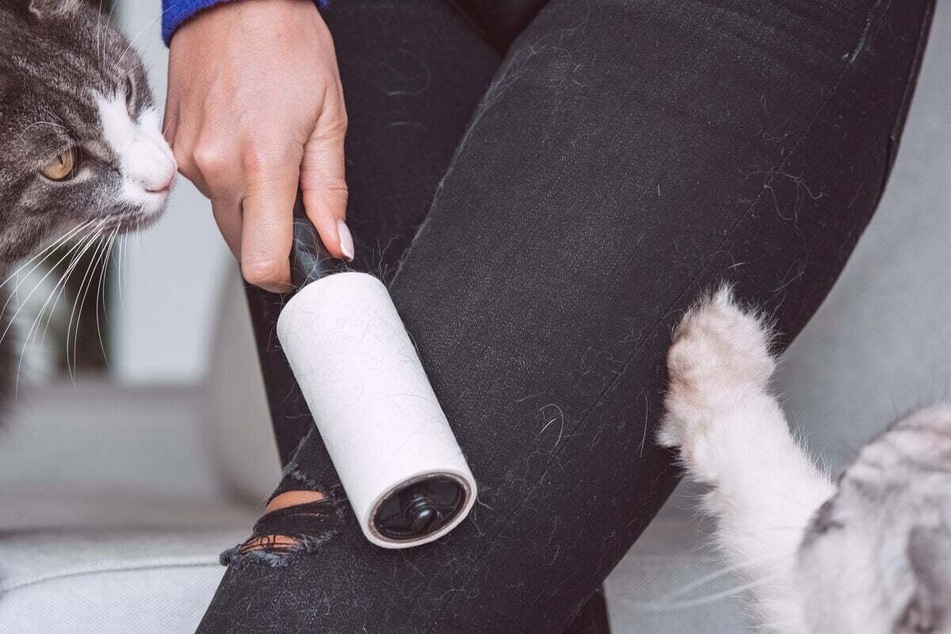
Do cats like being brushed?
Cats are a bit on-off about being brushed. Some kitties love the feeling and will enjoy it as a relaxing, pleasurable, fun, and relieving exercise. Others will try to claw your eyes out. It's down to you making the experience one that your cat associates with positive things. Be gentle, so that you don't hurt it, and make sure that the environment and situation is calm and happy.
You want to follow the basic rules of the brushing game: stroke in the direction of the fur, wear thick gloves, and try to give your cat plenty of love before you start brushing away.
Why is my cat losing hair?
There are a variety of reasons why your feline friend might be suffering from rather serious hair loss. Now, it's not necessarily a sign that it has some nasty disease or something, but something that can indicate easily-remediable ill-health. Instead of boring you with an overabundance of detail, we've prepared a quick run-down.
Here are the five main reasons why your cat is losing hair
Diet: Bad diet and an overconsumption of junk food, snacks, and food from the table, can cause all sorts of problems. Hair loss is one of those problems, and quite a serious one. Speak with your vet and design a cat diet strategy for your kitty.
Fleas, ticks, and parasites: All sorts of parasites live in the world, and many of them may attack your beloved cat. Fleas, for example, are a particular nuisance. If your cat is losing fur at an alarming rate, check for some of these parasites and their corresponding symptoms. It might be time for a vet.
Skin health: If your cat has skin problems, including all sorts of rashes and dermatitis, it may cause its fur to fall out. One of the most obvious signs of this is when a cat is developing bald spots and the skin underneath is all red.
Hypothyroidism: This is an affliction that attacks (you guessed it) the thyroid. It isn't a disease or infection, but instead a genetic disorder that the cat has probably had for a very long time. Hypothyroidism isn't necessarily something you need to worry too much about, though, because there are plenty of effective treatments available.
Stress: Have you recently moved house with your cat? Are there new people at home? Has your cat gone through a trauma recently? Cats get stressed too, and it's not unlikely that this stress will cause fur loss from time to time.
To be abundantly clear: We are not veterinarians, and cannot diagnose your cat's condition. If you are ever worried about your feline's health, take it immediately to the vet and have it checked on.
When should I worry about my cat losing hair?
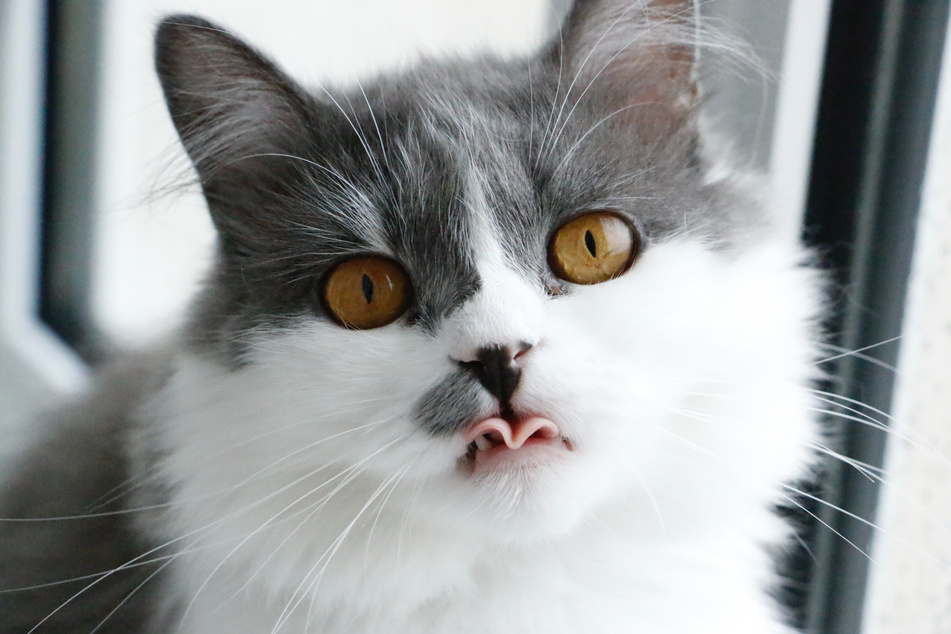
The state of your cat's fur says a lot about its health. Brushing regularly is always a good idea, but sometimes you might notice that more hair is coming off than usual. If you start noticing bald patches on your cat, or noticeably higher hair loss, it is possible that your cat could have alopecia. This particular affliction is generally caused by stress, skin conditions or improper nutrition.
As a result, if you ever find that your cat is developing bald patches on its body, don't waste a moment and pay the veterinarian a visit!
Remember, medical experts always know better than an internet search.
You can't stop a cat from shedding, but you can help
Cat fur can be a frustrating, allergy-triggering and never-ending problem, but that doesn't mean you have to put up with it. While there is no way to stop your cat from shedding (it's a natural process, there's nothing to be done), there's plenty that can be done to reduce the amount of fur lost.
At the end of the day, your cat is going to shed and it will leave fur all over the place. All you can hope to do is reduce the quantity of that fur and pay attention if it starts losing excessive amounts – then it's time to see the vet!
Cover photo: Unsplash/Brett Jordan
